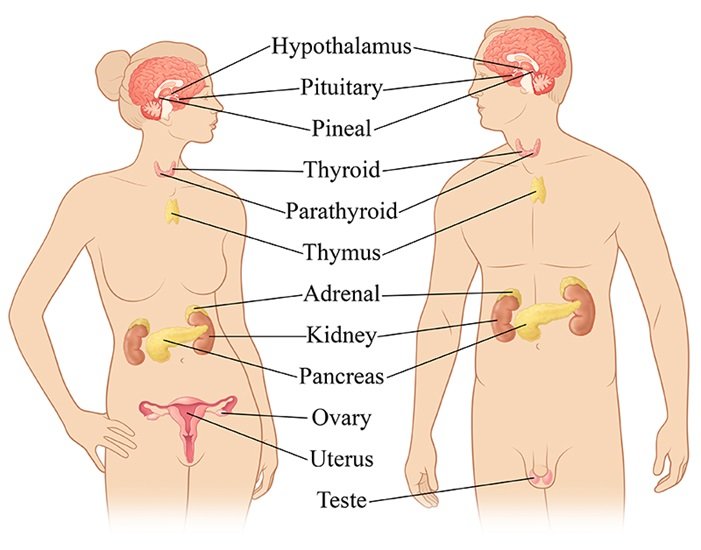SOFT TISSUE HEALTH #5: HORMONES
In this section we are trying to condense a very large subject into a blog size entry, meaning we will discuss general concepts without a lot of details.
In sections #1-4, we covered the nutrients needed to build high quality soft tissues, but now we to realize that nutrients are not automatically uploaded into the complex architecture of our soft tissues without some signaling to do so. Part of that signaling involves hormones.
A variety of hormones impact the growth, repair and remodeling of our soft tissues, and as such, hormone imbalances can be a source of low grade chronic poor soft tissue healing and susceptibility to chronic injuries. Below is a summary of the hormone systems that are more closely connected with soft tissue problems.
· Gender variable hormones, including estrogens, progesterone and testosterone. These hormones are involved in improving flexibility, quality and growth of soft tissues. Women suffer the bulk of gender variable hormone problems because they experience more hormonal fluctuations throughout their lifetime. Soft tissue injuries and pain can flare up at certain times of the menstrual cycle, post partum, and especially in the first few years of menopause when estrogens can drop pretty steeply. Women may be on long acting synthetic hormones that suppress endogenous production. Both men and women can be placed on hormone blocking therapies for years at a time for hormone positive cancers. Males often will go through the equivalent of menopause, or andropause, but more gradually starting around age 50, and while the sexual impact of andropause gets a fair amount of medical attention, the soft tissue symptoms of decreasing testosterone do not.
· Thyroid hormones: a huge driver of normal cellular metabolism, active thyroid hormones are crucial for soft tissue repair and resiliency. Ask anyone who has delt with hypothyroidism and they will tell you that every tissue in their body seems to hurt and be intolerant to normal activities. Thyroid disorders can be complex, more widespread than recognized with TSH testing alone, and in many instances, not fully balanced with straight T4 thyroid medications alone
· Anabolic hormones: there are quite a few hormones that have anabolic ( = tissue building) activity, but for the sake of this discussion I will highlight DHEA, pregnenolone and growth hormones. The first two are more closely related to the gender variable hormones through enzyme conversion. They are part of the system often called “ adrenal” in laymen terms. Their main role is to build up tissue. Chronic stress of all forms can shunt anabolic hormone precursors into the cortisol pathway and negatively affect tissue building: mental stress of course, but other forms of stress like sleep deprivation, chronic nutritional deficiencies, chronic infections, toxic exposure, significant thermal stress, chronic fasting etc . Medications, especially steroids which are widely used, can significantly depress normal soft tissue buildup by suppressing endogenous anabolic hormone production.
· Insulin: insulin is often overlooked in these discussions, since most people only associate insulin with blood sugar management and diabetes. Insulin is actually a very complex hormone that regulates anabolic activity in many tissues in response to perceived energy availability ( pancreas releases insulin in response to glucose sensors primarily, but also to fatty acid and amino acids, to determine if the body has enough energy on hand to perform a task, such a building up muscle or releasing a fertile egg). It needs to be present in a healthy normal amounts in order for other hormone systems to be active ( thyroid in particular). Soft tissue health will be affected if the body is in a state of insulin resistance and high BMI ( and can be aggravated by certain diabetic medications), or in a state of very low insulin production, such as excessive fasting, ketogenic diets etc
The bottom line: hormone imbalances can be part of chronic soft tissue disorders, but hormone imbalances are also delicate to work up and treat, and should be ideally addressed with the support of a health professional.













